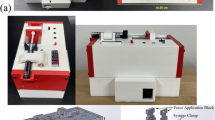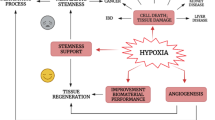Abstract
Regenerative medicine using stem cells has appeared as a potential therapeutic alternative for coronary artery disease, and stem cell clinical studies are currently on their way. However, initial results of these studies have provided mixed information, in part because of the inability to correlate organ functional information with the presence/absence of transplanted stem cells. Recent advances in molecular biology and imaging have allowed the successful noninvasive monitoring of transplanted stem cells in the living subject. In this article, different imaging strategies (direct labeling, indirect labeling with reporter genes) to study the viability and biology of stem cells are discussed. In addition, the limitations of each approach and imaging modality (eg, single photon emission computed tomography, positron emission tomography, and MRI) and their requirements for clinical use are addressed. Use of these strategies will be critical as the different regenerative therapies are being tested for clinical use.

Similar content being viewed by others
References
Papers of particular interest, published recently, have been highlighted as: • Of importance •• Of major importance
Orlic D, Kajstura J, Chimenti S, et al.: Bone marrow cells regenerate infarcted myocardium. Nature 2001, 410:701–705.
Gimble JM, Katz AJ, Bunnell BA: Adipose-derived stem cells for regenerative medicine. Circ Res 2007, 100:1249–1260.
Erbs S, Linke A, Schachinger V, et al.: Restoration of microvascular function in the infarct-related artery by intracoronary transplantation of bone marrow progenitor cells in patients with acute myocardial infarction: the Doppler Substudy of the Reinfusion of Enriched Progenitor Cells and Infarct Remodeling in Acute Myocardial Infarction (REPAIR-AMI) trial. Circulation 2007, 116:366–374.
Lunde K, Solheim S, Aakhus S, et al.: Autologous stem cell transplantation in acute myocardial infarction: the ASTAMI randomized controlled trial. Intracoronary transplantation of autologous mononuclear bone marrow cells, study design and safety aspects. Scand Cardiovasc J 2005, 39:150–158.
Wollert KC, Meyer GP, Lotz J, et al.: Intracoronary autologous bone-marrow cell transfer after myocardial infarction: the BOOST randomised controlled clinical trial. Lancet 2004, 364:141–148.
Dimmeler S, Zeiher AM: Cell therapy of acute myocardial infarction: open questions. Cardiology 2009, 113:155–160.
• Forrester JS, Makkar RR, Marban E: Long-term outcome of stem cell therapy for acute myocardial infarction: right results, wrong reasons. J Am Coll Cardiol 2009, 53:2270–2272. This editorial discusses the principal challenges encountered by the field of stem cell therapy for cardiac diseases.
Bengel FM, Schachinger V, Dimmeler S: Cell-based therapies and imaging in cardiology. European journal of nuclear medicine and molecular imaging. 2005, 32(Suppl 2):S404–S416.
Thakur ML, Lavender JP, Arnot RN, et al.: Indium-111-labeled autologous leukocytes in man. J Nucl Med 1977, 18:1014–1021.
Lin S, Xie X, Patel MR, et al.: Quantum dot imaging for embryonic stem cells. BMC Biotechnol 2007, 7:67.
Bos C, Delmas Y, Desmouliere A, et al.: In vivo MR imaging of intravascularly injected magnetically labeled mesenchymal stem cells in rat kidney and liver. Radiology 2004, 233:781–789.
Kraitchman DL, Heldman AW, Atalar E, et al.: In vivo magnetic resonance imaging of mesenchymal stem cells in myocardial infarction. Circulation 2003, 107:2290–2293.
Dick AJ, Guttman MA, Raman VK, et al.: Magnetic resonance fluoroscopy allows targeted delivery of mesenchymal stem cells to infarct borders in Swine. Circulation 2003, 108:2899–2904.
Massoud TF, Gambhir SS: Molecular imaging in living subjects: seeing fundamental biological processes in a new light. Genes Dev 2003, 17:545–580.
Kraitchman DL, Tatsumi M, Gilson WD, et al.: Dynamic imaging of allogeneic mesenchymal stem cells trafficking to myocardial infarction. Circulation 2005, 112:1451–1461.
Li Z, Suzuki Y, Huang M, et al.: Comparison of reporter gene and iron particle labeling for tracking fate of human embryonic stem cells and differentiated endothelial cells in living subjects. Stem Cells 2008, 26:864–873.
Chen IY, Greve JM, Gheysens O, et al.: Comparison of optical bioluminescence reporter gene and superparamagnetic iron oxide MR contrast agent as cell markers for noninvasive imaging of cardiac cell transplantation. Mol Imaging Biol 2009, 11:178–187 .
Kang WJ, Kang HJ, Kim HS, et al.: Tissue distribution of 18F-FDG-labeled peripheral hematopoietic stem cells after intracoronary administration in patients with myocardial infarction. J Nucl Med 2006, 47:1295–1301.
Chin BB, Nakamoto Y, Bulte JW, et al.: 111In oxine labelled mesenchymal stem cell SPECT after intravenous administration in myocardial infarction. Nucl Med Commun 2003, 24:1149–1154.
Wu JC, Tseng JR, Gambhir SS: Molecular imaging of cardiovascular gene products. J Nucl Cardiol 2004, 11:491–505.
Carr HM, Smyth JV, Rooney OB, et al.: Limitations of in-vitro labeling of endothelial cells with indium-111 oxine. Cell Transplant 1995, 4:291–296.
Zanzonico P, Koehne G, Gallardo HF, et al.: [131I]FIAU labeling of genetically transduced, tumor-reactive lymphocytes: cell-level dosimetry and dose-dependent toxicity. Eur J Nucl Med Mol Imaging 2006, 33:988–997.
Inubushi M, Tamaki N: Radionuclide reporter gene imaging for cardiac gene therapy. Eur J Nucl Med Mol Imaging 2007, 34(Suppl 1):S27–S33.
Phelps ME: Inaugural article: positron emission tomography provides molecular imaging of biological processes. Proc Natl Acad Sci USA 2000, 97:9226–9233.
Zhuo L, Sun B, Zhang CL, et al.: Live astrocytes visualized by green fluorescent protein in transgenic mice. Dev Biol 1997, 187:36–42.
Contag CH, Jenkins D, Contag PR, et al.: Use of reporter genes for optical measurements of neoplastic disease in vivo. Neoplasia 2000, 2:41–52.
Krishnan M, Park JM, Cao F, et al.: Effects of epigenetic modulation on reporter gene expression: implications for stem cell imaging. FASEB J 2006, 20:106–108.
Cao F, Wagner RA, Wilson KD, et al.: Transcriptional and functional profiling of human embryonic stem cell-derived cardiomyocytes. PLoS One 2008, 3:e3474.
Wu JC, Cao F, Dutta S, et al.: Proteomic analysis of reporter genes for molecular imaging of transplanted embryonic stem cells. Proteomics 2006, 6:6234–6249.
Wang F, Dennis JE, Awadallah A, et al.: Transcriptional profiling of human mesenchymal stem cells transduced with reporter genes for imaging. Physiol Genomics 2009, 37:23–34.
Terrovitis J, Kwok KF, Lautamaki R, et al.: Ectopic expression of the sodium-iodide symporter enables imaging of transplanted cardiac stem cells in vivo by single-photon emission computed tomography or positron emission tomography. J Am Coll Cardiol 2008, 52:1652–1660.
Rodriguez-Porcel M, Gheysens O, Chen IY, et al.: Image-guided cardiac cell delivery using high-resolution small-animal ultrasound. Mol Ther 2005, 12:1142–1147.
Wu JC, Chen IY, Sundaresan G, et al.: Molecular imaging of cardiac cell transplantation in living animals using optical bioluminescence and positron emission tomography. Circulation 2003, 108:1302–1325.
Li Z, Wu JC, Sheikh AY, et al.: Differentiation, survival, and function of embryonic stem cell derived endothelial cells for ischemic heart disease. Circulation 2007, 116:I46–I54.
MacLaren DC, Gambhir SS, Satyamurthy N, et al.: Repetitive, non-invasive imaging of the dopamine D2 receptor as a reporter gene in living animals. Gene Ther 1999, 6:785–791.
Liang Q, Satyamurthy N, Barrio JR, et al.: Noninvasive, quantitative imaging in living animals of a mutant dopamine D2 receptor reporter gene in which ligand binding is uncoupled from signal transduction. Gene Ther 2001, 8:1490–1498.
Chen IY, Wu JC, Min JJ, et al.: Micro-positron emission tomography imaging of cardiac gene expression in rats using bicistronic adenoviral vector-mediated gene delivery. Circulation 2004, 109:1415–1420.
Kang JH, Lee DS, Paeng JC, et al.: Development of a sodium/iodide symporter (NIS)-transgenic mouse for imaging of cardiomyocyte-specific reporter gene expression. J Nucl Med 2005, 46:479–483.
Cohen B, Dafni H, Meir G, et al.: Ferritin as an endogenous MRI reporter for noninvasive imaging of gene expression in C6 glioma tumors. Neoplasia 2005, 7:109–117.
Gilad AA, Winnard PT Jr, van Zijl PC, et al.: Developing MR reporter genes: promises and pitfalls. NMR Biomed 2007, 20:275–290.
Zinn KR, Chaudhuri TR: The type 2 human somatostatin receptor as a platform for reporter gene imaging. Eur J Nucl Med Mol Imaging 2002, 29:388–399.
Sharma V, Luker GD, Piwnica-Worms D: Molecular imaging of gene expression and protein function in vivo with PET and SPECT. J Magn Reson Imaging 2002, 16:336–351.
Zhernosekov K, Aschoff P, Filosofov D, et al.: Visualisation of a somatostatin receptor-expressing tumour with 67 Ga-DOTATOC SPECT. Eur J Nucl Med Mol Imaging 2005, 32:1129.
Alvarez-Maya I, Navarro-Quiroga I, Meraz-Rios MA, et al.: In vivo gene transfer to dopamine neurons of rat substantia nigra via the high-affinity neurotensin receptor. Mol Med 2001, 7:186–192.
Lee CH, Wu CL, Shiau AL: Hypoxia-induced cytosine deaminase gene expression for cancer therapy. Hum Gene Ther 2007, 18:27–38.
Bloor CM, White FC, Roth DM: The pig as a model of myocardial ischemia and gradual coronary artery occlusion. In Swine as Models in Biomedical Research. Edited by Swindle MM, Moody DC, Phillips LD. Ames, Iowa: Iowa State University Press; 1992:163–175.
Rodriguez-Porcel M, Brinton TJ, Chen IY, et al.: Reporter gene imaging following percutaneous delivery in swine moving toward clinical applications. J Am Coll Cardiol 2008, 51:595–597.
Bengel FM, Anton M, Richter T, et al.: Noninvasive imaging of transgene expression by use of positron emission tomography in a pig model of myocardial gene transfer. Circulation 2003, 108:2127–2133.
•• Willmann JK, Paulmurugan R, Rodriguez-Porcel M, et al.: Imaging gene expression in human mesenchymal stem cells: from small to large animals. Radiology 2009, 252:117–127. In this study, the researchers used a PET reporter gene strategy to image, for the first time, stem cells after transplantation to the myocardium in a swine animal model.
•• Yaghoubi SS, Jensen MC, Satyamurthy N, et al.: Noninvasive detection of therapeutic cytolytic T cells with 18F-FHBG PET in a patient with glioma. Nat Clin Pract Oncol 2009, 6:53–58. The study by Yaghoubi et al. constitutes the first to image transplanted cells in a patient noninvasively. In this study, lymphocytic T cells, carrying a PET reporter gene, were delivered to patients with glioma and cell status imaged after the administration of the appropriate reporter probe.
Rodriguez-Porcel M, Wu JC, Gambhir SS: Molecular imaging of stem cells. StemBook 2009. Available at http://www.stembook.org/node/603. Accessed November 2009.
Acknowledgments
US National Institutes of Health HL88048 and the Mayo Foundation Scholarship Program.
Disclosure
No potential conflict of interest relevant to this article was reported.
Author information
Authors and Affiliations
Corresponding author
Rights and permissions
About this article
Cite this article
Rodriguez-Porcel, M. In Vivo Imaging and Monitoring of Transplanted Stem Cells: Clinical Applications. Curr Cardiol Rep 12, 51–58 (2010). https://doi.org/10.1007/s11886-009-0073-1
Published:
Issue Date:
DOI: https://doi.org/10.1007/s11886-009-0073-1




